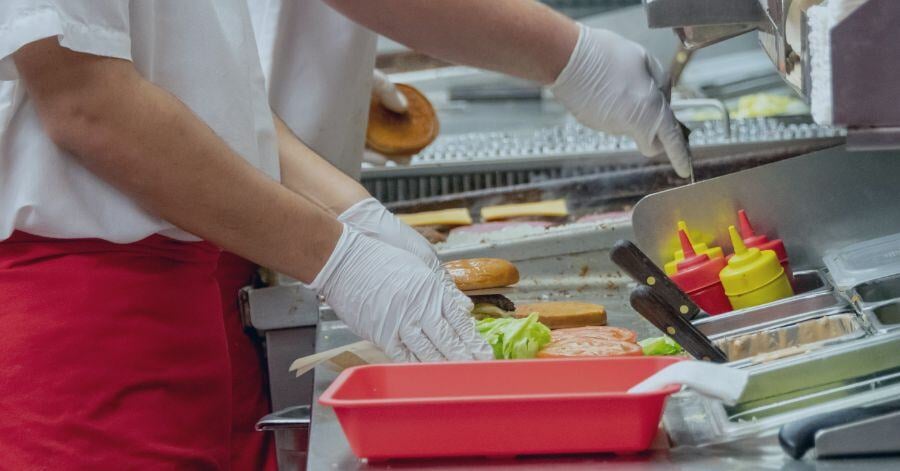Running a restaurant can sometimes feel like juggling hot pans - lots to balance, and if you drop something, it can get messy (and expensive).
One of the most important items on your “don’t-drop-this” list is food cost. Food cost makes up a huge part of your overall expenses, and it directly impacts your restaurant’s bottom line. So, keeping those food costs in check is crucial.
But what exactly is the average restaurant food cost per month? And, more importantly, how can you calculate it for your own restaurant and make sure you’re not throwing money in the trash (literally)? Let’s dive in, break it down, and make sure you’re serving up profits along with those delicious dishes.
What is Food Cost?
Food cost is exactly what it sounds like - it’s the total cost of all the food and drinks you use to whip up the items on your menu. This includes everything from raw ingredients like vegetables and meats to pre-prepped items and sauces.
Food cost doesn’t stop at ordering ingredients either; it involves managing waste, portion control, and negotiating deals with your suppliers.
In other words, your food cost isn’t just what you’re putting on the plate - it’s everything that goes into making sure that plate leaves the kitchen and ends up in front of a satisfied customer. The more efficiently you handle your food costs, the more money you’ll have left over to focus on other things, like running your business or maybe even taking that well-deserved vacation.
What is Food Cost Percentage?
Now, let’s get down to the nitty-gritty: your food cost percentage. This little number tells you how much of your restaurant’s revenue is being gobbled up by food expenses. And just like in the kitchen, this percentage is all about balance.
To calculate your food cost percentage, you take your total food cost, divide it by your total food sales, and multiply that by 100. Here’s a quick example:
- Let’s say your food cost for the month is $10,000, and your total food sales are $40,000. Your food cost percentage would be:
(10,000 ÷ 40,000) × 100 = 25%
That means 25% of your sales are spent on food. Most restaurants aim to keep their food cost percentage between 25% and 35%, but the exact number will depend on your menu, your location, and how well you’re managing costs. Think of it as your restaurant’s culinary “sweet spot.”
What is the Average Monthly Restaurant Food Cost?
As we mentioned, on average, restaurants spend between 25% and 35% of their revenue on food, but let’s break that down into some dollars and cents. For smaller establishments, your monthly food costs might hover between $5,000 and $15,000. Larger or fine-dining restaurants, on the other hand, could see monthly food costs ranging from $20,000 to $50,000 (or more).
These numbers, though, are just the averages. Your food cost will depend on factors like your restaurant’s size, menu style, and even the time of year (seasonal ingredients, anyone?). But knowing the ballpark figures can help you keep things on track.
How to Calculate Your Actual Monthly Food Cost
Ready to dig into your own food cost? Here’s how you can calculate it step-by-step. It’s a bit like making a dish - you’ve got to follow the recipe, but it’s easier than you might think!
- Start With Your Beginning Inventory: Take stock of everything you have in your kitchen at the start of the month (yes, we mean everything).
- Add in Your Purchases: Throughout the month, track every purchase you make for ingredients, beverages, and other food-related items.
- Subtract Your Ending Inventory: At the end of the month, count what you have left.
- Use This Formula:
Food Cost = Beginning Inventory + Purchases − Ending Inventory
Here’s an example: If your beginning inventory was $8,000, your purchases were $12,000, and your ending inventory was $9,000, your food cost would be:
8,000 + 12,000 − 9,000 = 11,000
That’s $11,000 you spent on food in the month. Not too hard, right?
How to Calculate Your Ideal Monthly Food Cost
Now that you’ve got your actual food cost, let’s talk about your ideal food cost - what you should be spending, based on your menu prices, portion sizes, and ingredient costs. This calculation will help your business become more profitable.
Here’s how to find it:
- Break Down Your Menu: Calculate the cost of each ingredient in every dish you serve.
- Add up the Ingredient Costs for Each Dish: This will give you the cost of producing one serving of that dish.
- Use This Formula:
Ideal Food Cost = (Ingredient Cost ÷ Menu Price) × 100
For example, if your dish costs $3 to make, and you sell it for $12, your ideal food cost percentage is:
(3 ÷ 12) × 100 = 25%
By calculating the ideal food cost for each dish, you can spot where your menu might need tweaking or if your pricing is off.
Strategies That Can Improve Your Restaurant’s Food Cost
Now that you’ve done the math, let’s talk strategy. Here are some tasty tips for lowering your food costs and keeping that bottom line deliciously healthy:
1. Track Inventory Like a Pro
Knowing what’s in your kitchen at all times helps avoid over-ordering and reduces waste. Use inventory management software to track stock, and say goodbye to expired ingredients piling up in the back of the fridge.
2. Haggle with Suppliers
Suppliers aren’t set in stone, so don’t be afraid to negotiate better deals. Compare prices regularly, and build strong relationships with your suppliers - they might just offer discounts or promotions to keep you coming back.
3. Portion Control is Key
Consistency is king, and not just with your cooking. Make sure your team is using the same portions every time. Over-serving can add up to thousands of dollars in wasted food each year.
4. Cut Food Waste
Implement waste reduction practices like composting, using food scraps creatively, and reducing portion sizes on underperforming dishes. Less food waste means more savings (and a happier planet).
5. Menu Makeover
Take a close look at your menu. Are there dishes that aren’t selling well? Consider swapping them out for more popular items or dishes with lower food costs. And don’t be afraid to adjust your prices if needed.
6. Seasonal Ingredients = Seasonal Savings
Using in-season produce isn’t just good for the environment - it’s easier on your wallet, too. Rotate your menu to take advantage of lower-cost, seasonal ingredients.
7. Analyze Your Menu’s Performance
Regularly review your menu’s performance to ensure you’re offering profitable items. Dishes that don’t sell well could be costing you more than they’re worth. Focus on your top performers!
Are you looking to better manage food costs and improve your restaurant’s profitability? The Sculpture Hospitality team of inventory management experts would love to help save you time and increase your profits. Contact us today.











